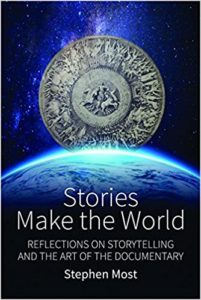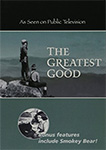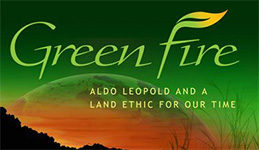Review — STORIES MAKE THE WORLD by Stephen Most (Peru)
 Stories Make the World: Reflections on Storytelling and the Art of the Documentary
Stories Make the World: Reflections on Storytelling and the Art of the Documentary
By Stephen Most (Peru 1965-67)
Berghahn Books
2017
279 Pages
$27.95 (paperback), $150.00 (hard cover), $15.37 (Kindle)
Reviewed by Alana DeJoseph (Mali 1992-94)
•
FIRST AND FOREMOST, let me state that this book is dense. It is packed full of wisdom and insights and history. It is not a fast read, nor is it an easy read, but it is well worth the time and enormously enriching and enlightening to anyone who delves into it.
I should also say that I have had the opportunity to work with the author Stephen Most on two documentaries and feel much the wiser for it. Reading this book as we are developing A Towering Task: The Story of the Peace Corps was a fortuitous turn of events. Most’s clarity of vision and deep understanding of the complexities of documentary filmmaking are inspiring and helpful.
Stephen Most promises us the world in his new book Stories Make the World – and he delivers.
As a writer for numerous documentaries, Most has become an expert on a broad range of subjects, and with these deeper insights he illustrates for the reader the importance of the stories we tell.
From the dawn of man to today’s global consciousness, stories influence how we understand the world around us and how we communicate with others. Most takes us on a wild ride from the first human made fires to Homer and the Greek theatre, from psychoanalysis to climate change, and astrophysics to global politics – but he does it in a persuasively personal way through the experiences and passions of his documentary subjects.
Stories Make the World is divided into five parts: “Storytellers,” “Beginnings and Ends,” “The Natural World,” “The Human Word,” and “The Anthropocene.” In “Storytellers” Most introduces us to five very different individuals, all of whom have important stories to tell. Pedro Azabache was a Peruvian painter who focused much of his art on the transformation of indigenous life in Peru. (He himself was a Moche Indian.) He founded a school of fine arts and, when he died in 2012 was “known as an artist whose life and work bridged the historic, economic, and social divide between indigenous and modern Peru.” However, for the documentary writer Most, one of the most salient lessons learned in telling Pedro Azabache’s story was the elusiveness of memory. Working from Azabache’s own journals, much that needed to be confirmed had different versions depending on the storyteller. And thus begins the documentarians struggle to establish factuality and then focus in on the facts that will mostly clearly illustrate the story.
Eduardo Calderón, another Peruvian artist, was also a shamanic storyteller. We accompany Most as he attends one of Calderón’s healing sessions or mesas. Whether through witchcraft or artful storytelling (aided by the consumption of “a thick liquid”), individual attendees at the mesa find healing in Calderón’s words and ceremony. Most draws the connections to how stories in documentaries are told by combining art and knowledge, and magic of effects to appeal to both heart and mind of the audience.
Psychoanalyst Erik H. Erikson’s chapter focuses on perspective and a sense of identity. Most recounts the transformations in Erikson’s life history and reflects on the relationship between storyteller and subject. For Erikson there was a wide range between his studies of 16th century cleric Martin Luther and his colleague Sigmund Freud.
Human rights campaigner Ginetta Sagan whose pseudonym during the Italian Resistance in World War II was Topolino (or “little mouse”) empowered Amnesty International with her defense of prisoners of conscience. Most writes, and quotes Hannah Arendt: “To be known beyond the reach of their deeds and influence, to be remembered after their days are done, actors in history need “the help of the artist, of poets and historiographers, of monument-builders or writers.”” With this understanding, Most emphasizes the responsibility of the documentarian in preserving history and at the same time influencing current day events with the lessons from that history.
The last person in the collection of portraits is political theorist Hannah Arendt. Most begins this chapter with the sentence: “Stories make the world and stories limit it.” Arendt’s writings on Nazi war criminal Adolf Eichmann’s trial in Jerusalem in 1961 (Eichmann in Jerusalem: A Report on the Banality of Evil) caused much controversy, because rather than casting Eichmann in the light of a monster, Arendt revealed the man as vapid and unable (or unwilling) to understand his complicity in the Holocaust. Some accused Arendt of “victim blaming” for her humanization of the criminal. As a former student of Arendt’s Most has a more complex insight into his professor. Including information on the documentary about Hannah Arendt by Margarethe von Trotta, Most contrasts the personalities of Arendt in her quest to understand Eichmann and Eichmann in his refusal to accept responsibility. To highlight the challenges of the storyteller, he quotes Arendt: “Storytelling reveals meaning without committing the error of defining it.”
The second part of the book is titled “Beginnings and Ends.“ In this segment Stephen Most takes us on a journey through history. The invention of the impartial storyteller in Aeschylus’ Greek Theatre, the respect for the humanity of all characters in Homer’s Odyssey, and the definition of character and action all become important elements in crafting documentaries. Most leads us through the process of independent filmmaking, including challenging commonly held beliefs, giving the stage to all sides of the debate while sometimes expressing specific points of view without betraying the documentaries factuality, and the technical aspects of trial and error in editing. With the example of the Curtis brothers who both worked as photographers in the late 19th century and captured images of American Indians, Most shows how one’s own perspective can color the story one tells. Asahel Curtis, the younger brother aimed to show American Indians in their current way of life, while his older brother Edward worked to create images of American Indians as noble emblems of a bygone era. In his work for the Washington history museum’s video Native Heritage Most finds the importance of ethical storytelling reinforced by Upper Skagit Indian and indigenous oral historian Vi Hilbert. Human beings now populate most livable places on Earth and we are facing a global environment. The ability of stories to bring us closer or drive us further apart is becoming ever more crucial.
 This global understanding leads us straight into the third part of the book: “The Natural World.” Stephen Most has written several scripts for environmentally themed documentaries. I had the honor to work together with him on two of those documentaries: The Greatest Good, a documentary for the Centennial of the US Forest Service, and Green Fire, a documentary about famed conservationist Aldo Leopold. However, Most begins this segment with a view from space.
This global understanding leads us straight into the third part of the book: “The Natural World.” Stephen Most has written several scripts for environmentally themed documentaries. I had the honor to work together with him on two of those documentaries: The Greatest Good, a documentary for the Centennial of the US Forest Service, and Green Fire, a documentary about famed conservationist Aldo Leopold. However, Most begins this segment with a view from space.  By taking his readers into the rest of the universe, he allows us to develop a global perspective on subjects that go beyond national, even international understanding. By way of documentaries such as Kuiper: Window on the Universe about the Kuiper telescope, questions are raised such as: Can technological civilizations avoid self-destruction long enough to communicate across the cosmos? Through Life Beyond Earth Most explores the challenges of communicating complex scientific information to a broad audience in an engaging and understandable way. Casting of interviewees, narrowing in on necessary elements of the story, scouting locations that help illustrate the subject matter all guide the story.
By taking his readers into the rest of the universe, he allows us to develop a global perspective on subjects that go beyond national, even international understanding. By way of documentaries such as Kuiper: Window on the Universe about the Kuiper telescope, questions are raised such as: Can technological civilizations avoid self-destruction long enough to communicate across the cosmos? Through Life Beyond Earth Most explores the challenges of communicating complex scientific information to a broad audience in an engaging and understandable way. Casting of interviewees, narrowing in on necessary elements of the story, scouting locations that help illustrate the subject matter all guide the story.
Back on Earth Most introduces us to Aldo Leopold, a 20th century conservationist widely respected and admired in the environmental community, but hardly known to a general audience outside of Wisconsin or Iowa. Leopold’s land ethic is the guiding theme for Green Fire, a documentary that combines both the life history of the man and his legacy found in environmental efforts around the country. Leopold posed that if we widened the circle of our ethics beyond just human beings to include plants, animals, soils, and water – the land – we might be able to succeed at what he calls “the oldest task in human history: to live on a piece of land without spoiling it.” Since Leopold was clearly ahead of his time, and possibly ahead of our time, it was important to create a documentary that didn’t just focus on the past, but could illustrate the continuing legacy of this fundamental ethical shift.
With water as a unifying theme, Most tells the story of the Salmon War and its legacy in the Pacific Northwest. The power of the documentary to show multiple sides of the story over an extended amount of time allowed the filmmakers to go beyond polarizing discussions and explore the shared concerns and thus further reconciliation.
The fourth part of the book is called “The Human World.” Building on all previous discussions in the book, Most guides his readers through the stories of the Mississippi Freedom Summer, Berkeley in the Sixties, California’s Central Valley, and Christopher Alexander’s architecture. He explores the relationships of Palestinians and Israelis. The human challenges of the protagonists in the documentaries are reflected in the challenges of corralling their perspectives (and personalities) into coherent stories that help illuminate the human existence.
And in the final part of the book, “The Anthropocene,” Stephen Most brings it all together in the current geological era where humans have become the dominant influence on the planet. But how do you show themes of such magnitude? Most tells of the challenges of creating the documentary Oil on Ice which explores the Arctic National Wildlife Refuge and the push for its oil and gas exploration. His documentary Nature’s Orchestra delves into species diversity loss and how this is reflected in the acoustic changes of locations around the world. In The Fire Next Time Stephen Most takes a look at mega fires and their influence on the health of the planet. None of these topics are easy to represent and all are crucial to our understanding of the world. It is through the inquiring, impartial, and ethical storytelling of documentarians that these stories can be told in a manner that furthers our comprehension of and ability to live in this world. Most writes: “Absent the recognition that opinions contrary to one’s own may be based on facts one does not know, a person is caught within the whirlpool of a closed worldview.” As a script writer and producer of documentaries and the author of this book, Stephen Most has faced and risen up to the challenge of artfully telling stories that matter.
•
Alana DeJoseph (Mali 1992-94) has worked in video and film production for over 35 years, gaining experience across numerous roles in the field and studio, including producing, directing, camera operation, audio recording, and editing. She was associate producer and assistant editor of the PBS documentaries The Greatest Good (about the US Forest Service) and Green Fire (about conservationist Aldo Leopold). The Greatest Good appeared at 15 festivals with screenings in 35 states, winning numerous awards, including the CINE Golden Eagle Award and finalist designation for the Telly Awards. Green Fire appeared in 29 festivals from Colorado to India, Turkey, and New Zealand. Still airing on public television, it was awarded an EMMY, Telly Awards Bronze and a CINE Golden Eagle Award, among others.
No comments yet.
Add your comment